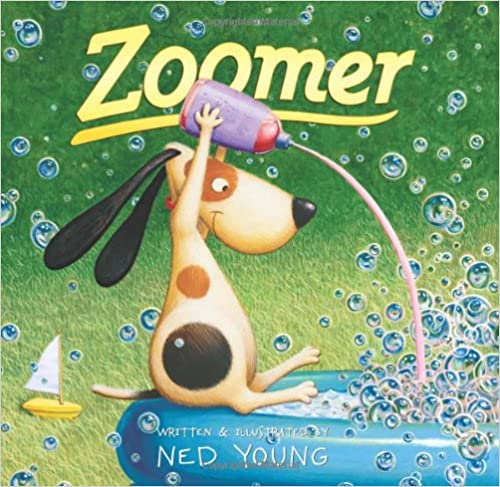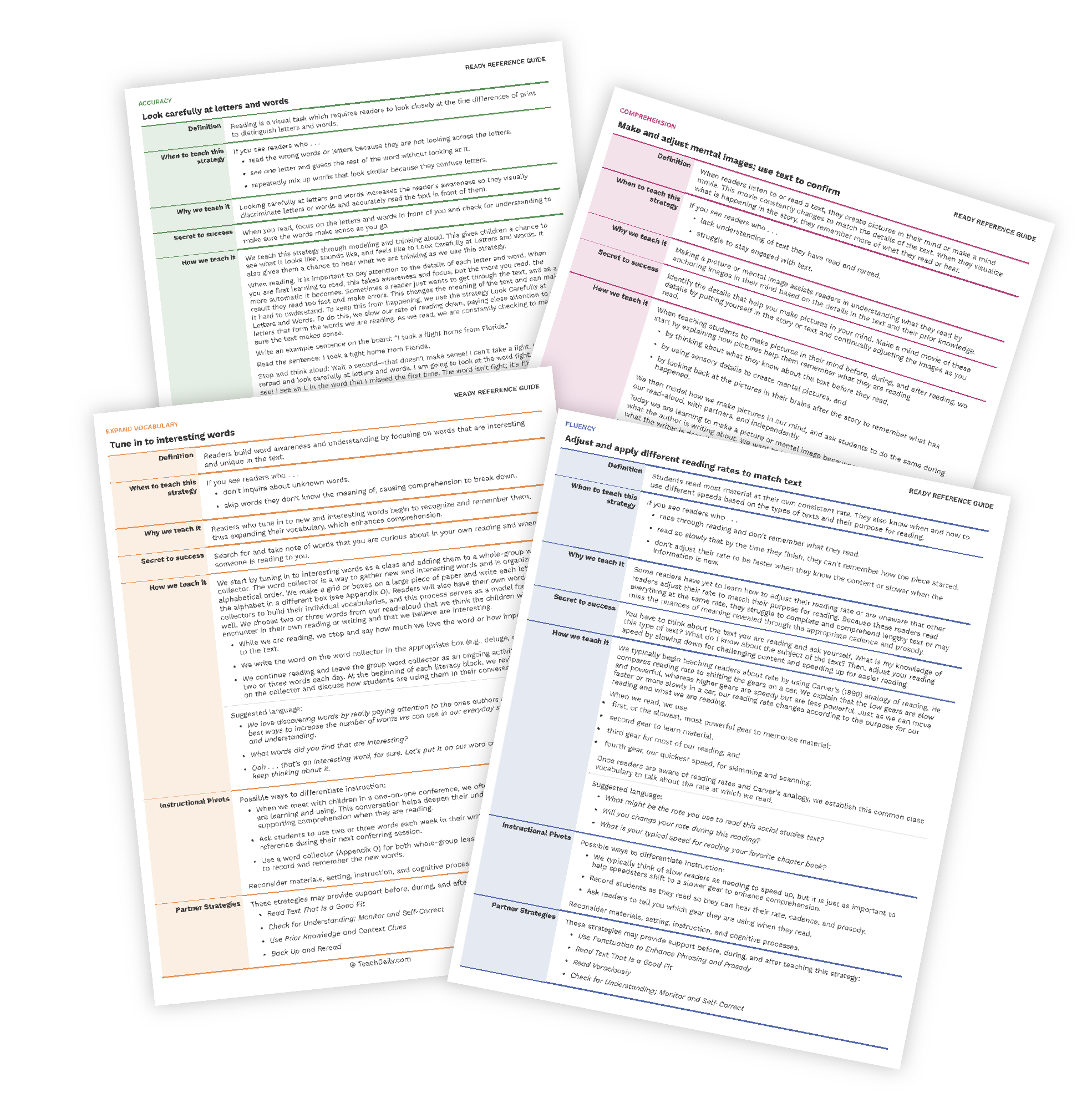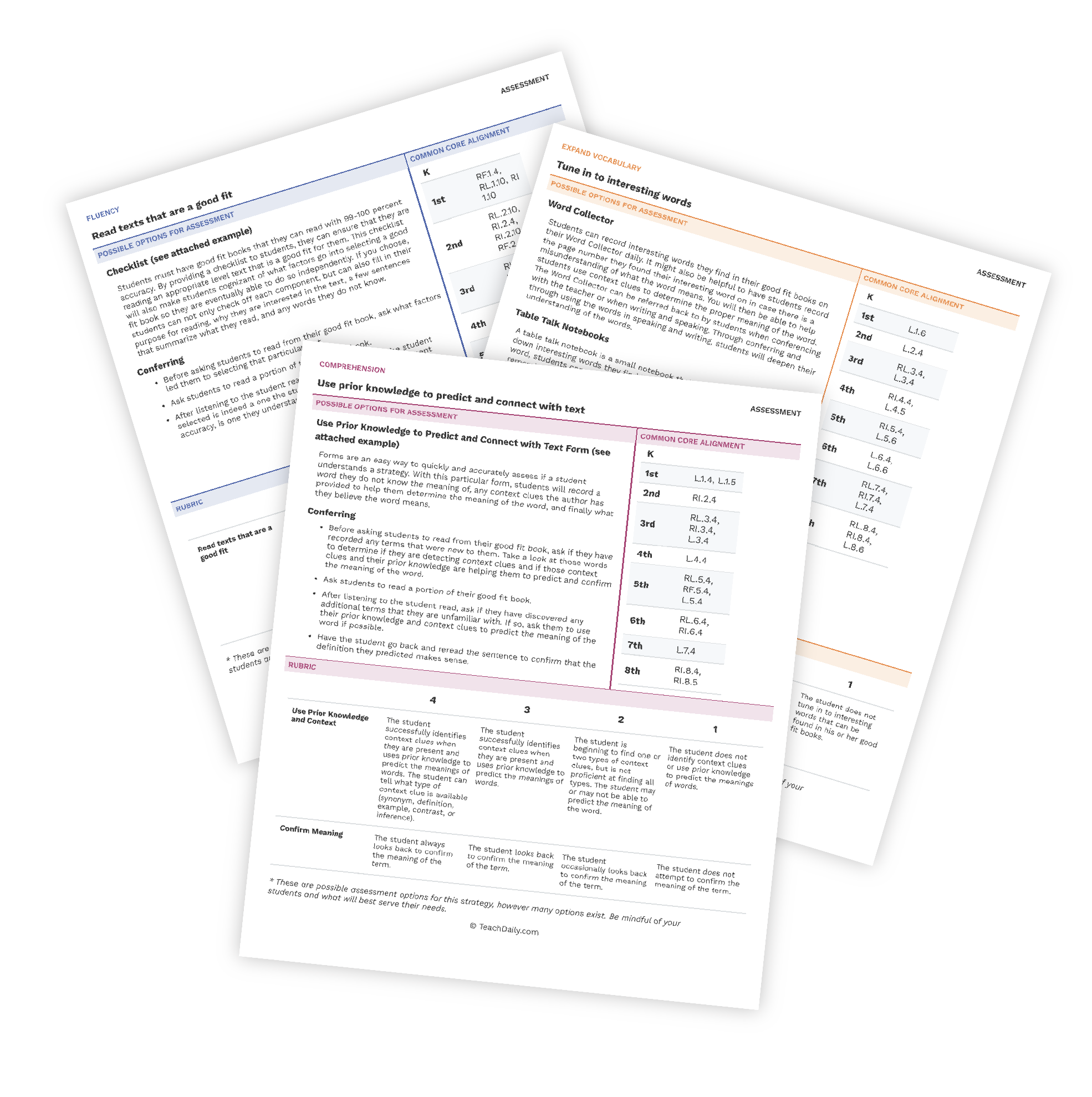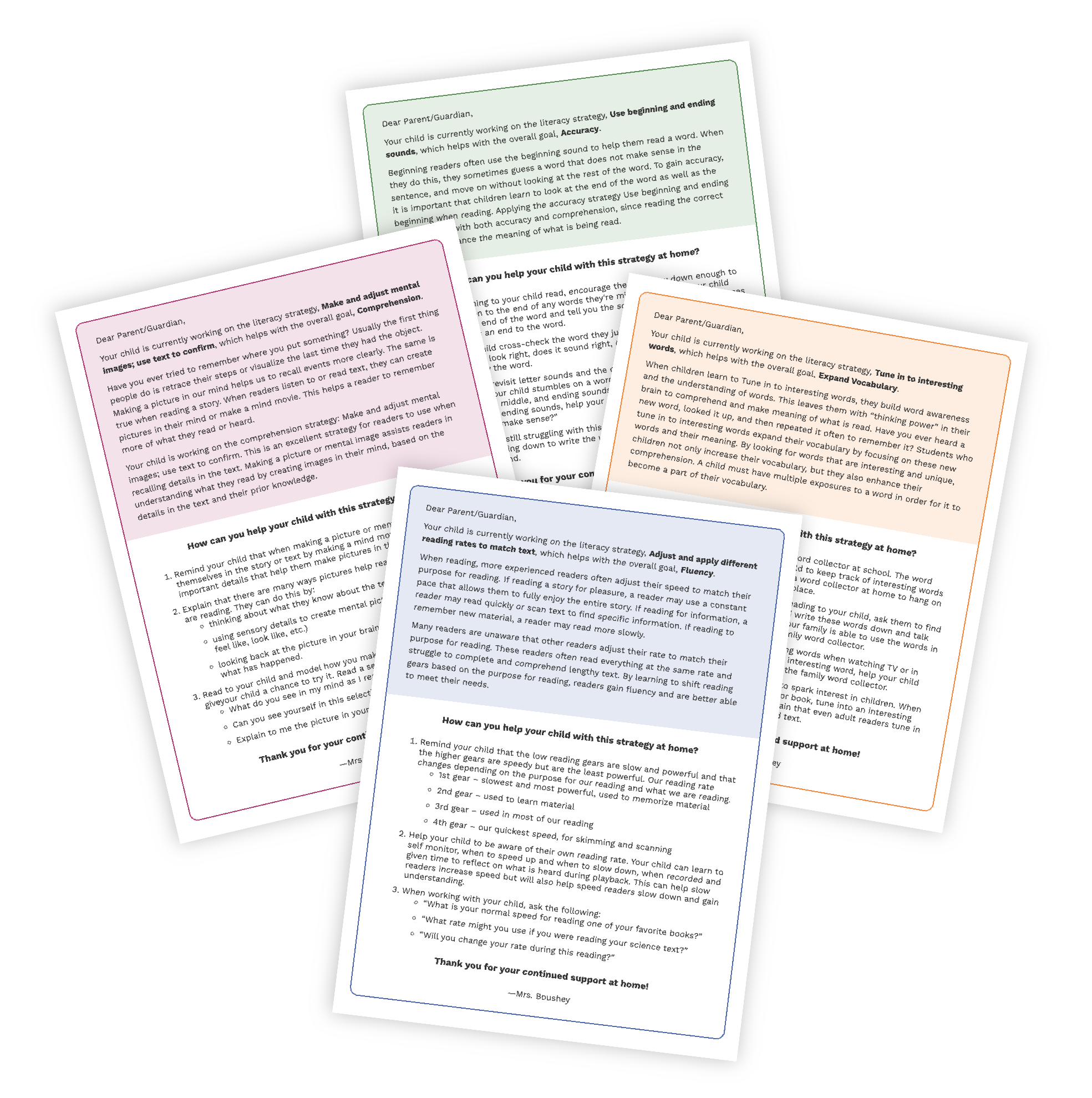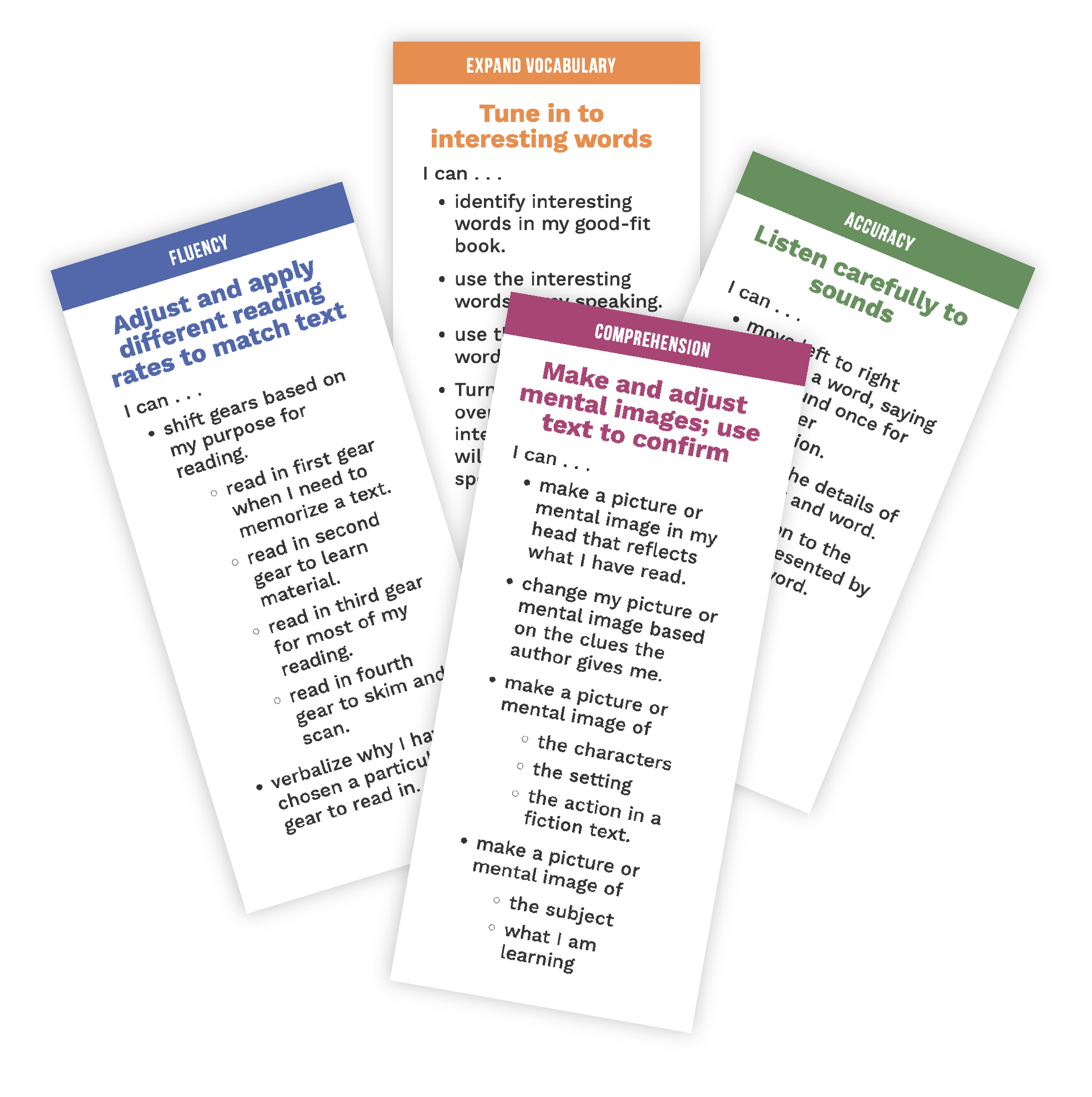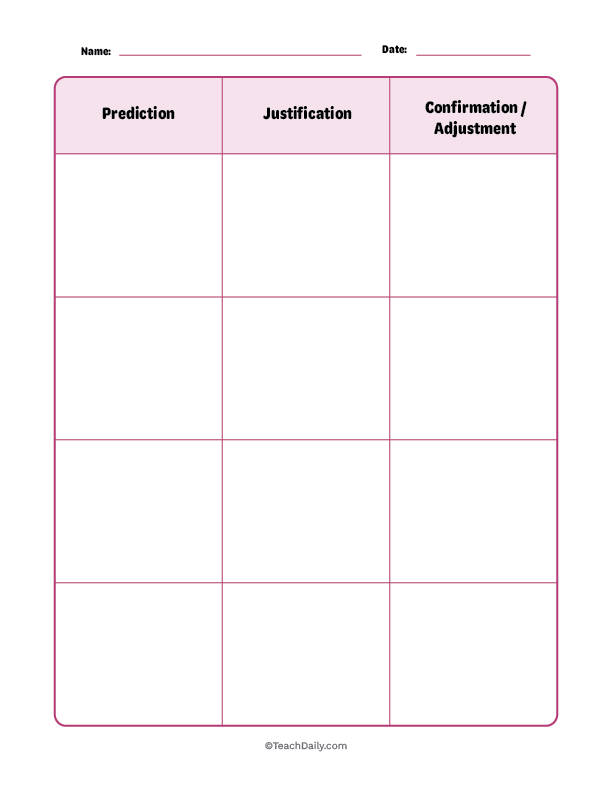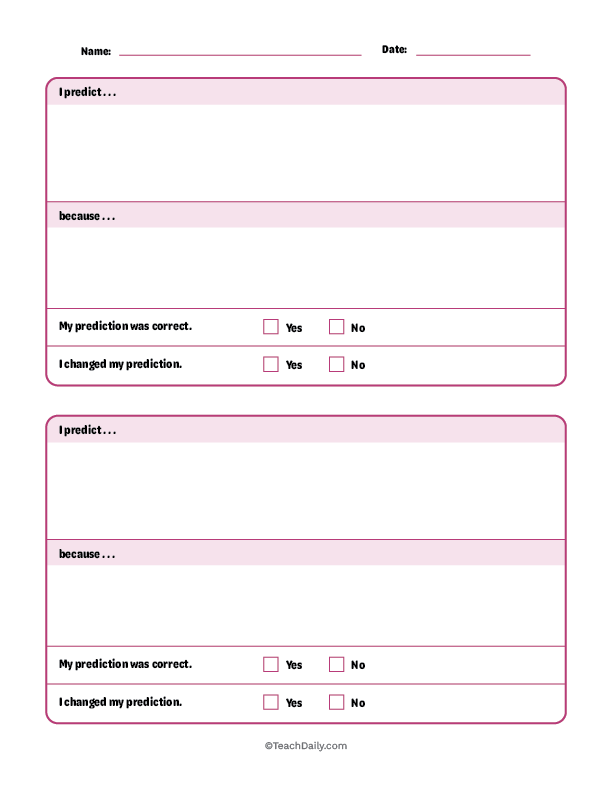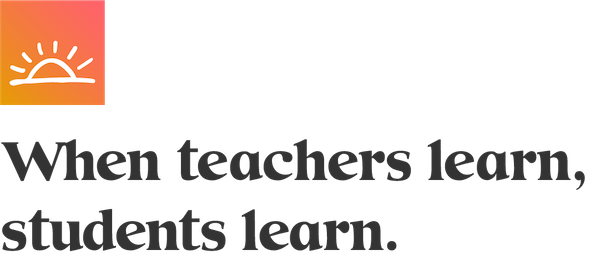Comprehension
Make and adjust predictions; use text
to confirm
Readers are active in their reading, constantly thinking about what they believe will happen in the text (predicting), and then looking for evidence in the text to decide if their prediction was true, partially true, or way off (confirming). They predict, confirm, re-predict, and re-confirm, creating a loop of engagement.
KEY DETAILS
Get to know this strategy
Expand All
Definition
Readers are active in their reading, constantly thinking about what they believe will happen in the text (predicting), and then looking for evidence in the text to decide if their prediction was true, partially true, or way off (confirming). They predict, confirm, re-predict, and re-confirm, creating a loop of engagement.
When to teach this strategy
If you see readers who . . .
- make unsubstantiated predictions that have nothing to do with the text.
- may not realize they should be predicting and re-predicting throughout the reading.
Why we teach it
Reading is an active process, and the more engaged we are in the text, the more meaning we make while reading. When we predict and confirm continually throughout our reading of a text, we become more engaged.
Secret to success
While reading, students pause and think about the details they already know in the text, then predict what they think will happen next. They stop again to see if their predictions were accurate, based on what they just read.
How we teach it
After defining the strategy for the class, we model how to use it by following these steps:
- Look at the details in the selection.
- Decide and say what you think will happen next, based on the details and your prior knowledge.
- Look back and check to make sure the prediction you made was accurate, based on information in the text. (confirm)
- Do steps 1–3 again. As readers, we use these three steps in a continuous loop while we are reading.
As we move to guided practice, we give students a piece of text and pair them with others in the class. We ask them to look at the text and predict what will happen, then read the selection together and find places in the text that confirm whether their predictions were true, partially true, or way off. Then start again, making a new prediction.
Suggested language:
- What do you think will happen, based on your information?
- What clues are you using to make that prediction?
- What kinds of clues did you use—pictures, words, or background knowledge?
- If your prediction was wrong, what clues did you miss that might have helped?
Instructional Pivots
Possible ways to differentiate instruction:
- Ask readers to confirm their predictions with evidence from the text.
- Teach students to use the pictures and their prior knowledge to predict and also confirm.
Reconsider materials, setting, instruction, and cognitive processes.
Partner Strategies
These strategies may provide support before, during, and after teaching this strategy:
- Infer and Support with Evidence
- Back Up and Reread
- Use Prior Knowledge to Predict and Connect with Text
- Check for Understanding; Monitor and Self-Correct
Common Core Alignment
K
1stRL.1.1, RL.1.2
2ndRL.2.1
3rdRL.3.6, RI. 3.6
4thRL.4.7
5thRL.5.1
6thRL.6.1
7th
8th
BOOKS
Books with Lessons to Help Teach This Strategy
Each book below has a coordinating lesson with an explicit example to teach this strategy. Select a book cover below, then download the lesson to see for yourself. At The Daily CAFE these were called Lit Lessons.
-
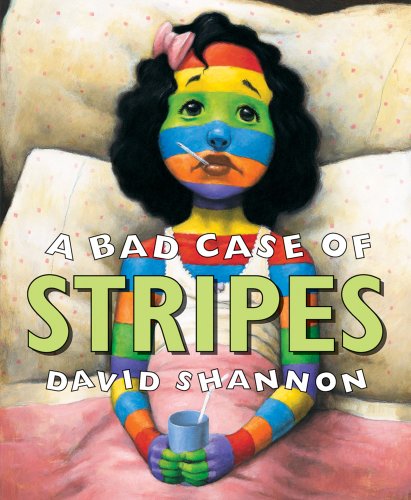
A Bad Case of Stripes
By David Shannon
-

A Quiet Place
By Douglas Wood
-
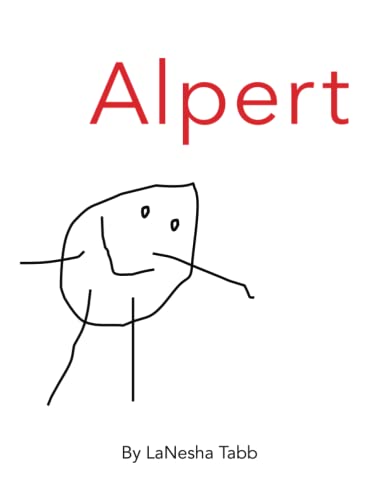
-
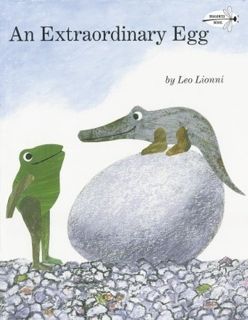
An Extraordinary Egg
By Leo Lionni
-
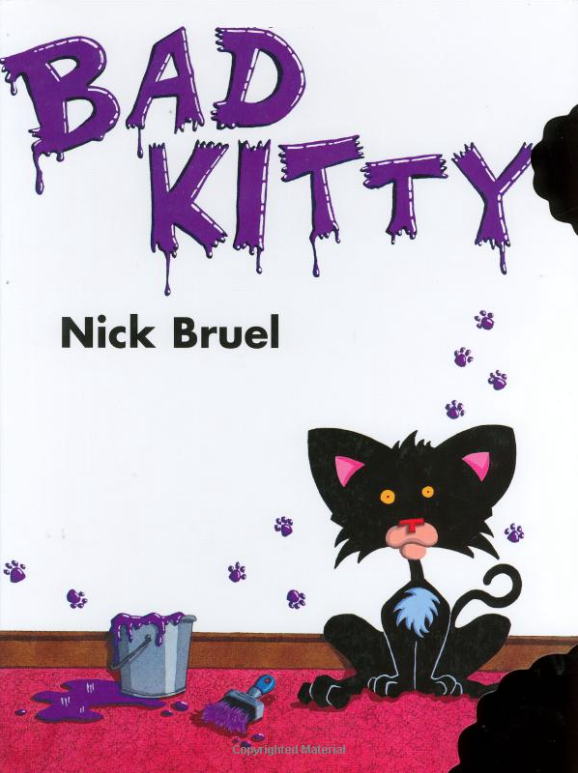
-
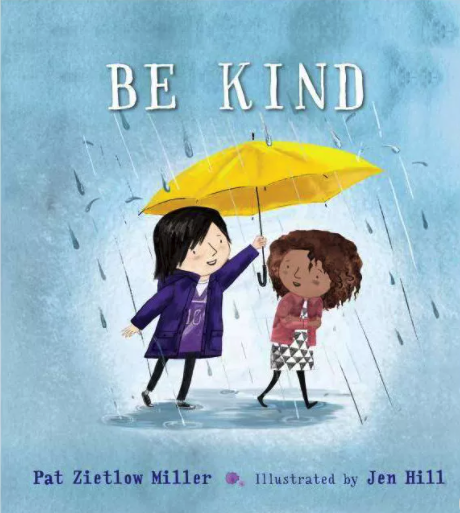
Be Kind
By Pat Zietlow Miller
-
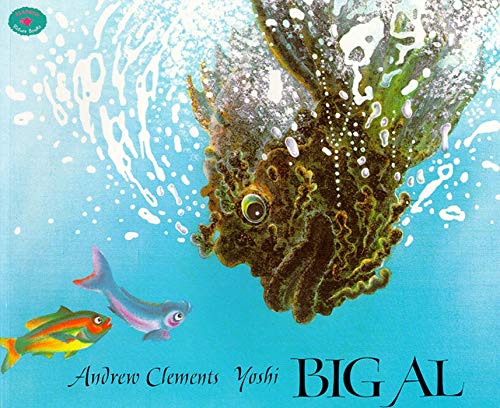
-
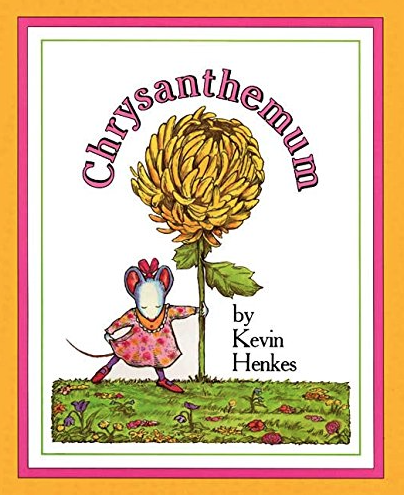
Chrysanthemum
By Kevin Henkes
-
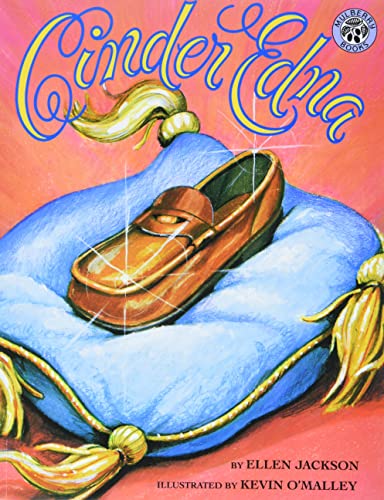
Cinder Edna
By Ellen Jackson
-
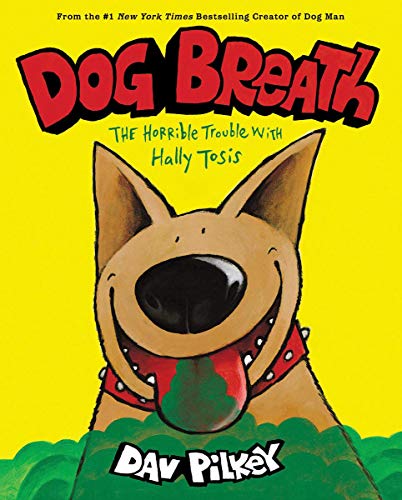
-
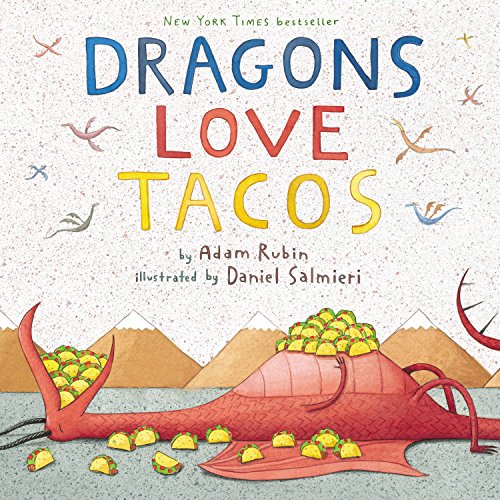
Dragons Love Tacos
By Adam Ruebin
-
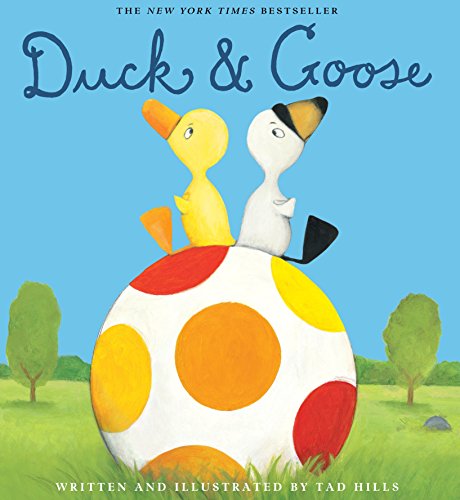
-
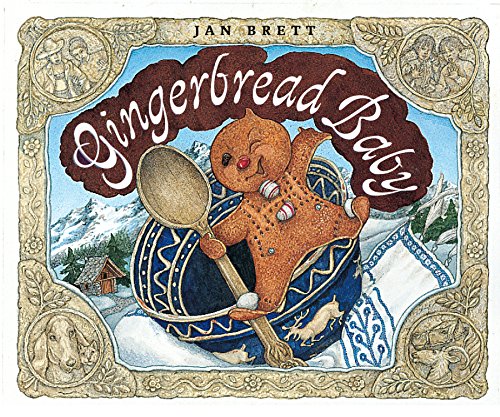
Gingerbread Baby
By Jan Brett
-

Harry the Dirty Dog
By Gene Zion
-
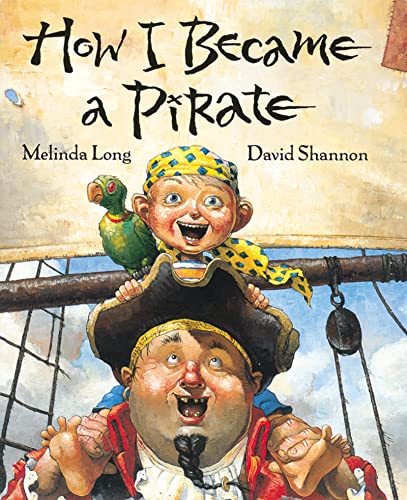
How I Became a Pirate
By Melinda Long
-
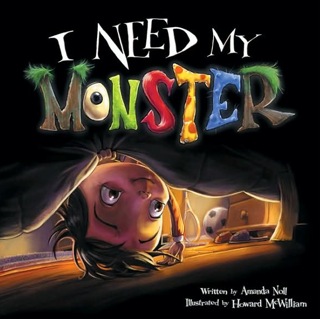
I Need My Monster
By Amanda Noll
-
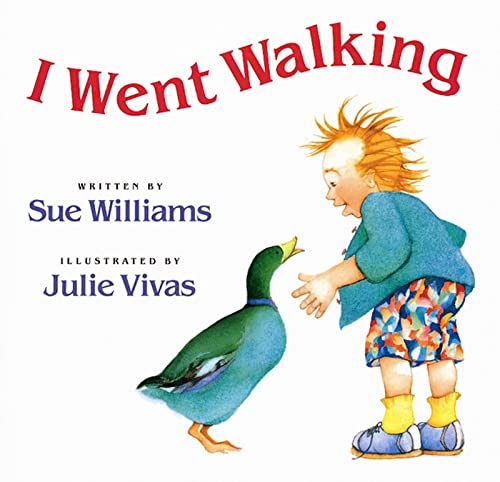
I Went Walking
By Sue Williams
-
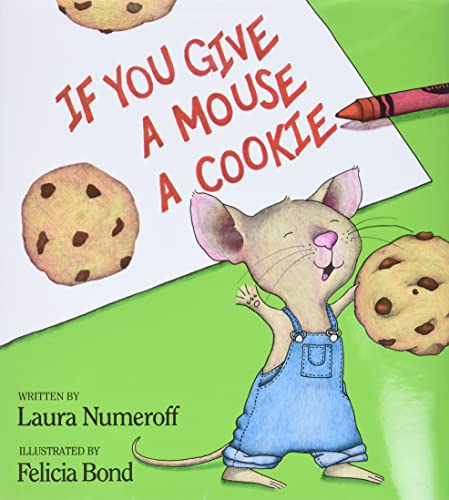
If You Give a Mouse a Cookie
By Laura Numeroff
-
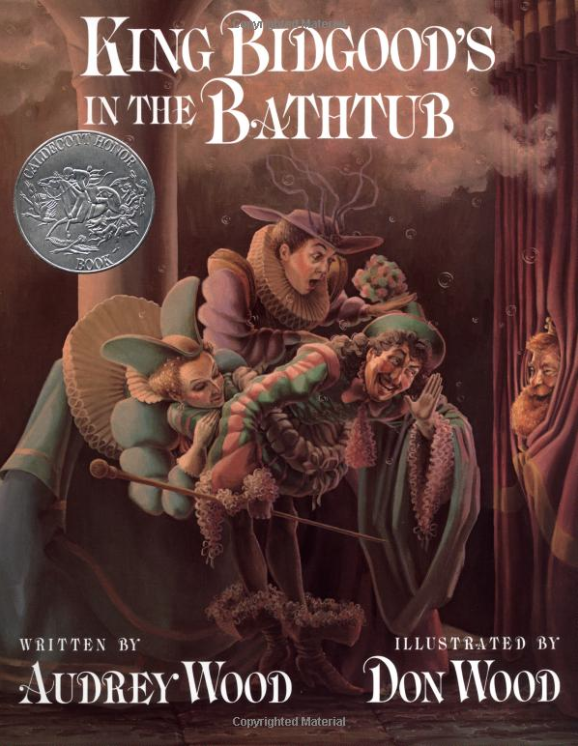
King Bidgood's in the Bathtub
By Audrey Wood
-
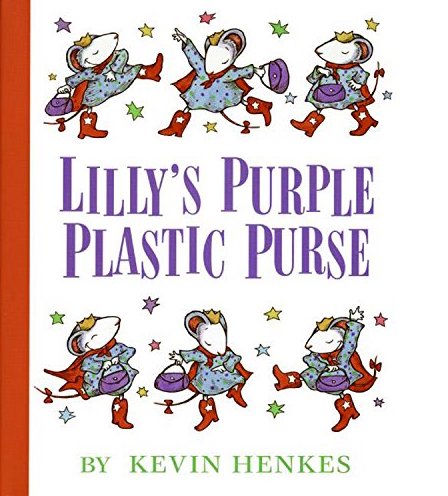
Lilly's Purple Plastic Purse
By Kevin Henkes
-
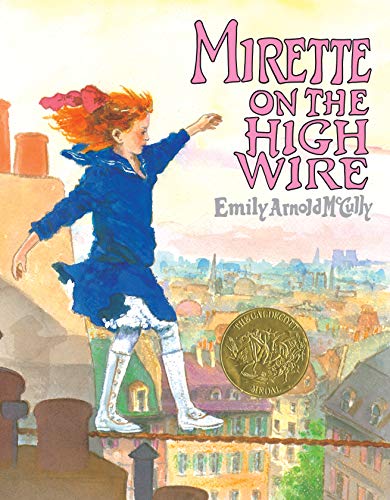
Mirette On The High Wire
By Emily Arnold McCully
-
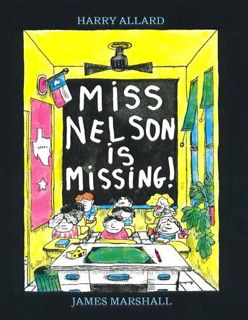
Miss Nelson is Missing
By Harry G. Allard Jr.
-
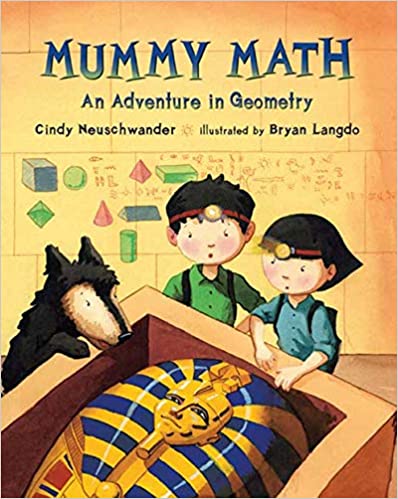
Mummy Math
By Cindy Neuschwander
-
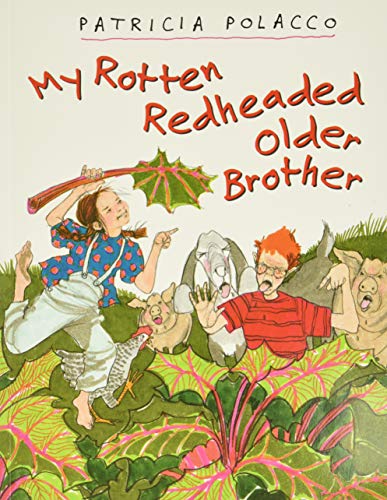
My Rotten Redheaded Older Brother
By Patricia Polacco
-
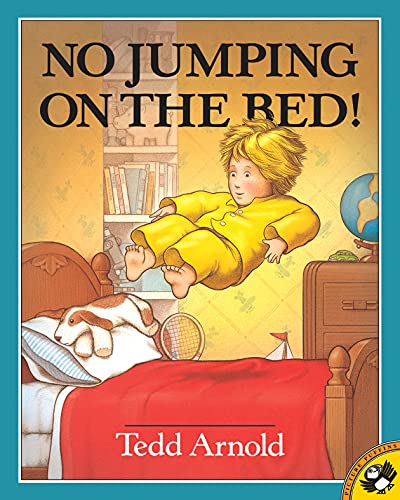
No Jumping On The Bed
By Tedd Arnold
-
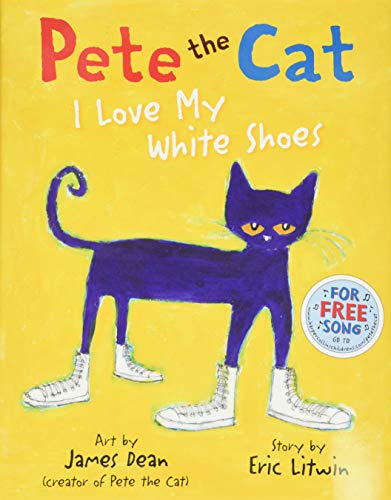
Pete the Cat: I Love My White Shoes
By Eric Litwin
-
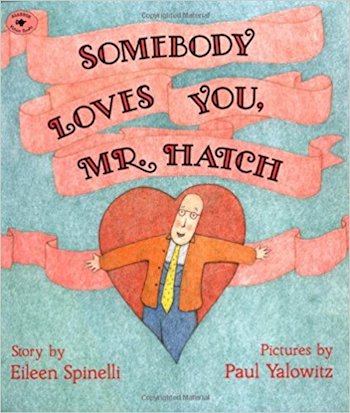
Somebody Loves You, Mr. Hatch
By Eileen Spinelli
-
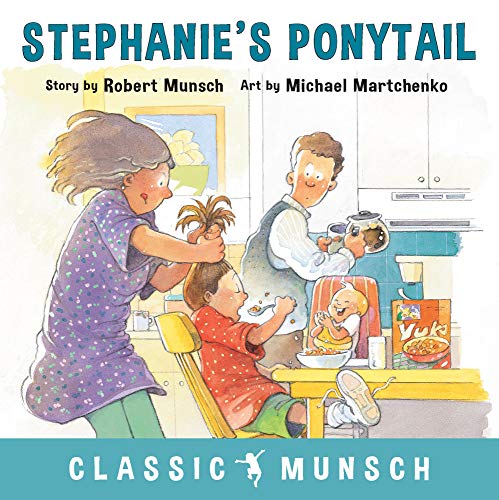
Stephanie's Ponytail
By Robert Munsch
-
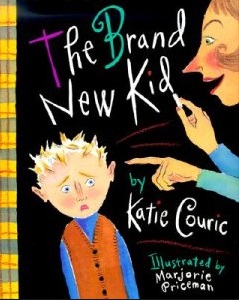
The Brand New Kid
By Katie Couric
-
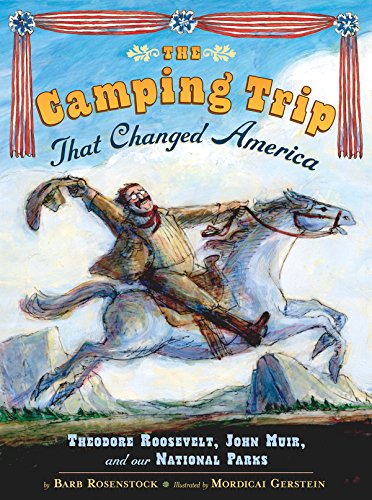
The Camping Trip That Changed America
By Barb Rosenstock
-
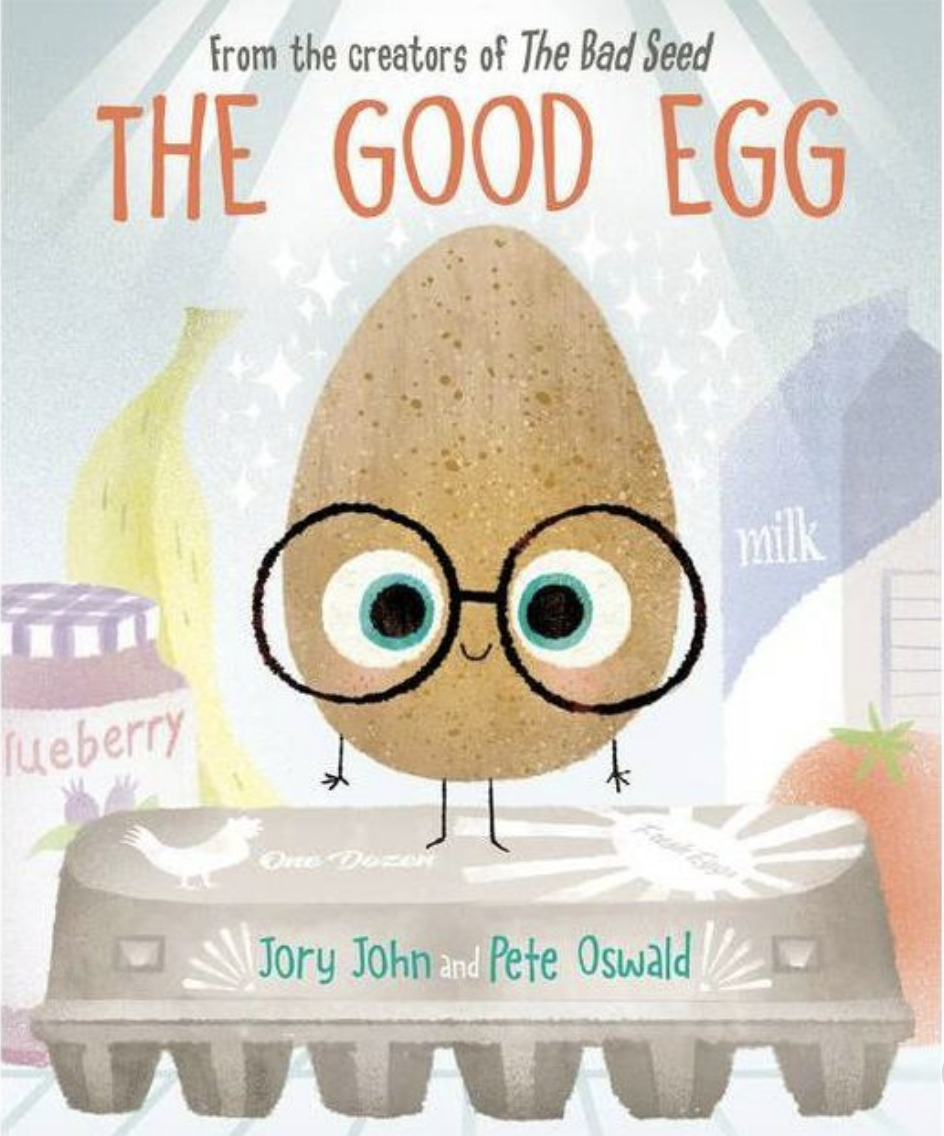
-
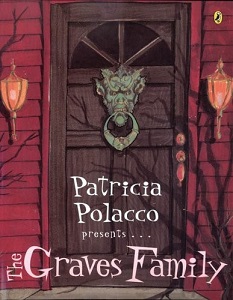
The Graves Family
By Patricia Polacco
-
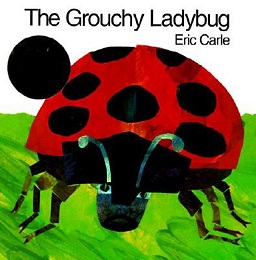
The Grouchy Ladybug
By Eric Carle
-
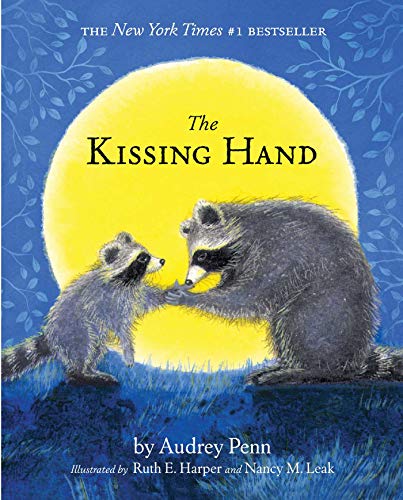
The Kissing Hand
By Audrey Penn
-
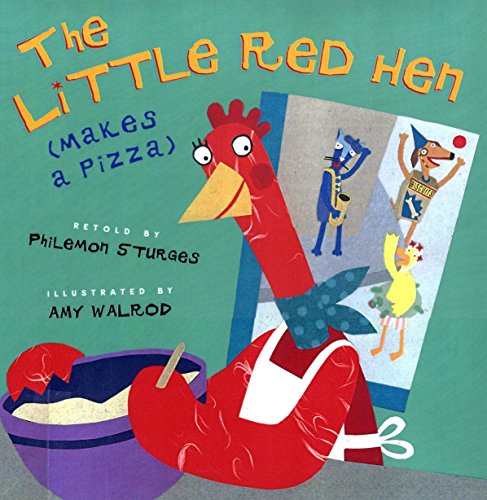
The Little Red Hen (Makes a Pizza)
By Philemon Sturges
-
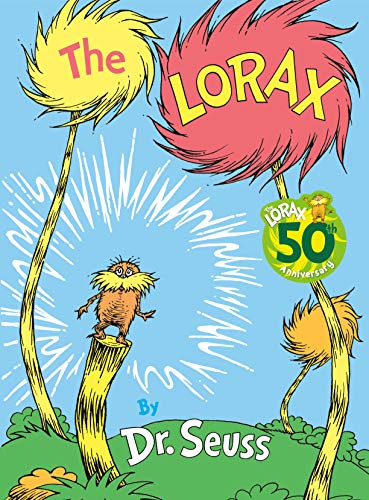
-
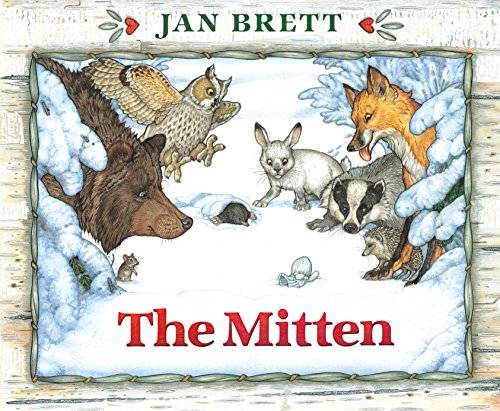
-
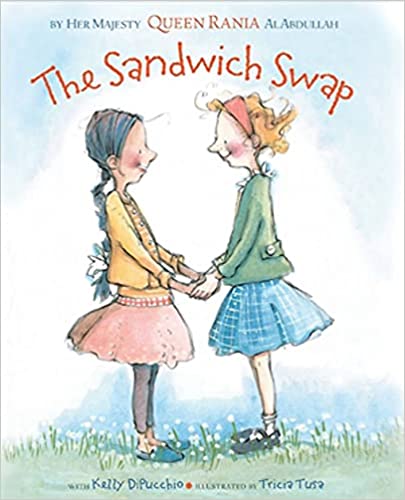
The Sandwich Swap
By Her Majesty Queen Rania Al Abdullah with Kelly DiPucchio
-
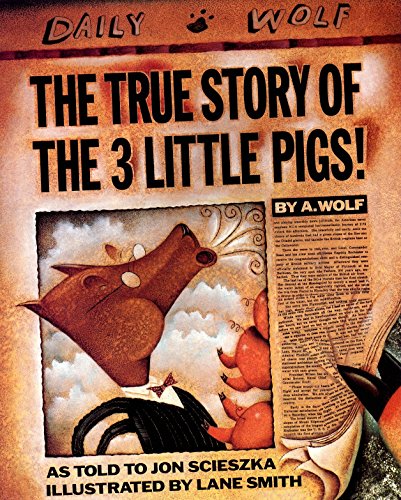
The True Story of the Three Little Pigs
By Jon Scieszka
-
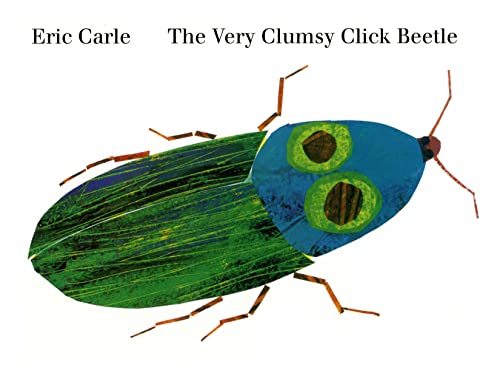
The Very Clumsy Click Beetle
By Eric Carle
-
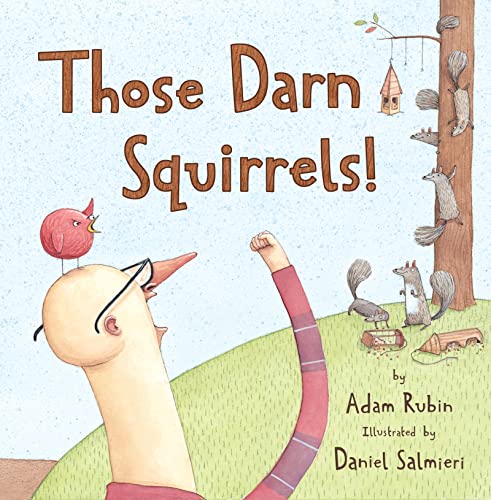
Those Darn Squirrels!
By Adam Rubin
-
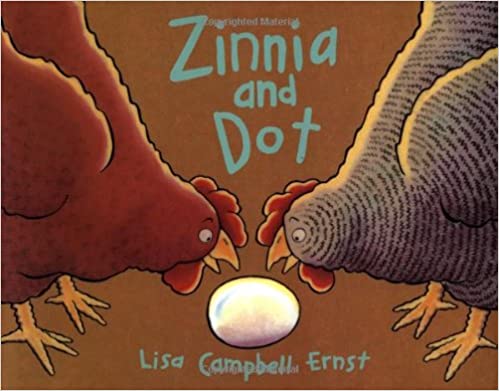
Zinnia and Dot
By Lisa Campbell Ernst
-
